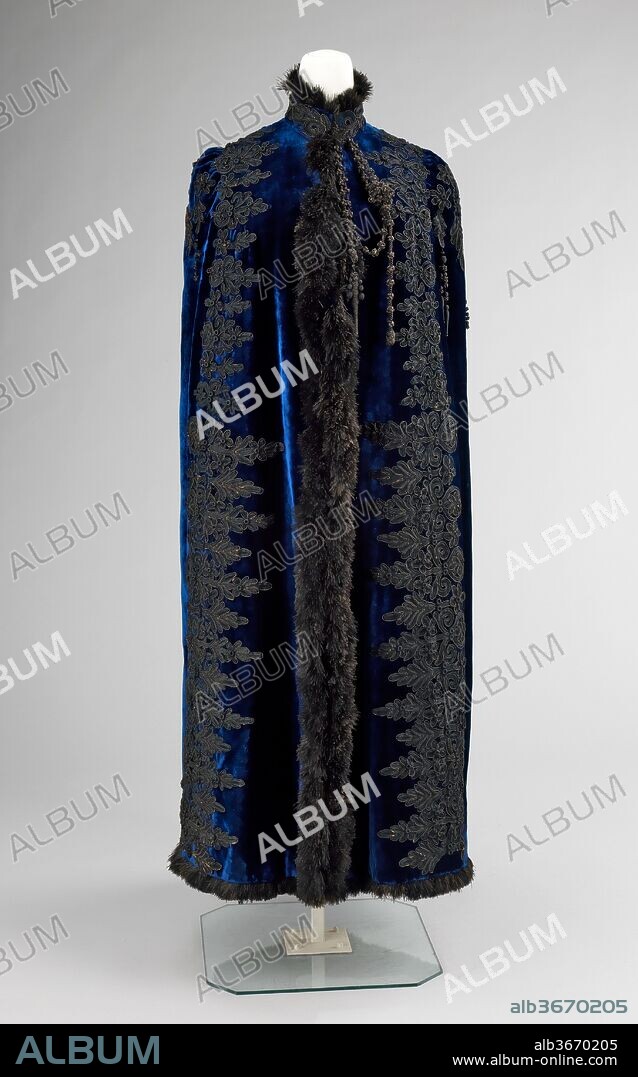alb3670205
evening cape

|
Add to another lightbox |
|
Add to another lightbox |



Buy this image.
Select the use:

Title:
evening cape
Caption:
Evening cape. Culture: French. Designer: Emile Pingat (French, active 1860-96). Date: 1885-89.
Emile Pingat had a proclivity for designing carefully finished dresses and outerwear which made him one of the top three French fashion designers during the second half of the 19th century. Active between 1860 and 1896, Pingat was adroit at manipulating multiple textiles and trimmings into a cohesive and elevated garment. He was inspired by design elements of other cultures and often reinterpreted them into his own work, making them unique and intriguing. His elaborately decorated and impeccably tailored outwear was particularly sought after.
The bustle silhouette was the prevalent style of any 1880s woman's wardrobe. This cape mimics that silhouette, allowing the wearer to maintain the shape created by her dress underneath. The rich color of the royal blue velvet is evocative of the original wearer who at that point in time would have been seen as a precious jewel who required continual attention and assistance. That perceived helplessness is also reflected in the cape's lack of armholes, which would limit easy mobility. Pingat's treatment of the trim completes the luxurious quality of the garment with a liberal application of guipure lace in vertical lines emphasizing the statuesque, but somewhat removed, appearance of the wearer.
Technique/material:
silk, feathers
Museum:
Metropolitan Museum of Art, New York, USA
Credit:
Album / Metropolitan Museum of Art, NY
Releases:
Model: No - Property: No
Rights questions?
Rights questions?
Image size:
2742 x 4400 px | 34.5 MB
Print size:
23.2 x 37.3 cm | 9.1 x 14.7 in (300 dpi)
Keywords:
 Pinterest
Pinterest Twitter
Twitter Facebook
Facebook Copy link
Copy link Email
Email
